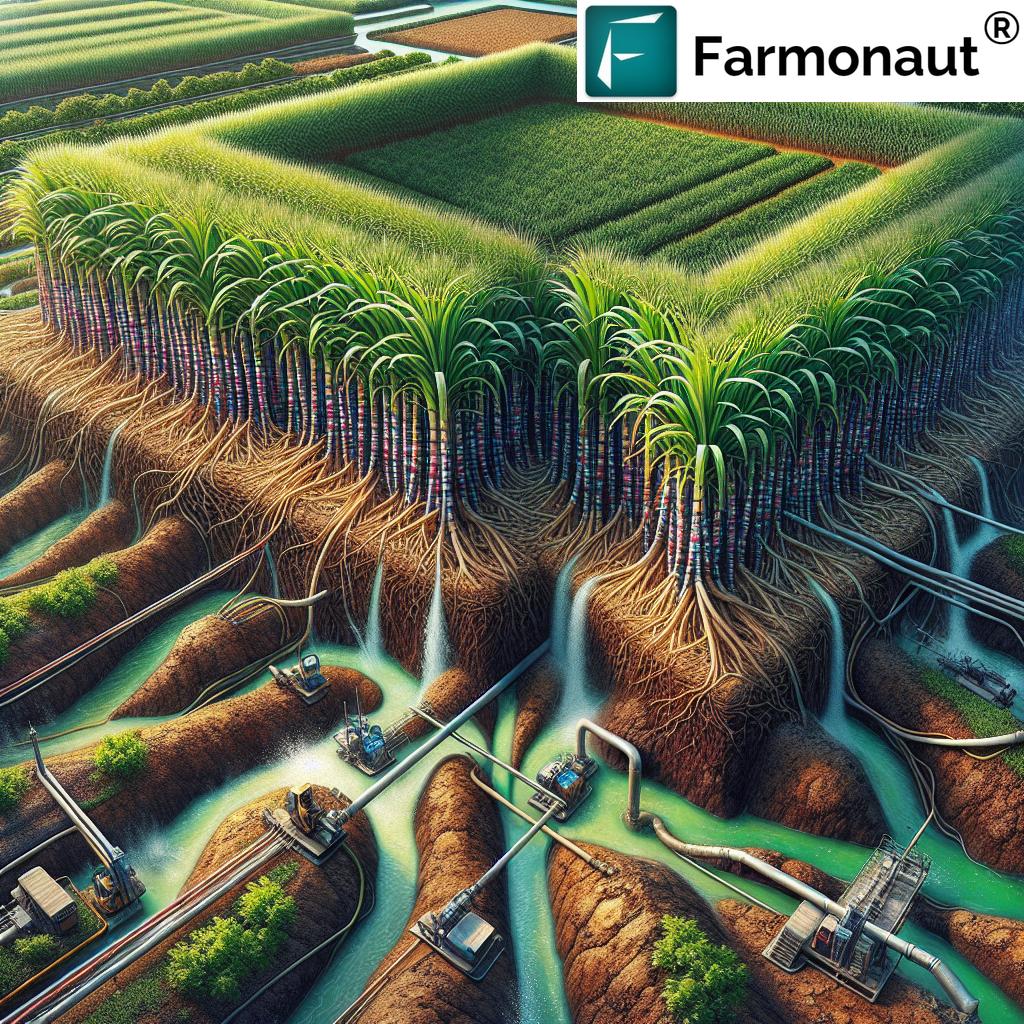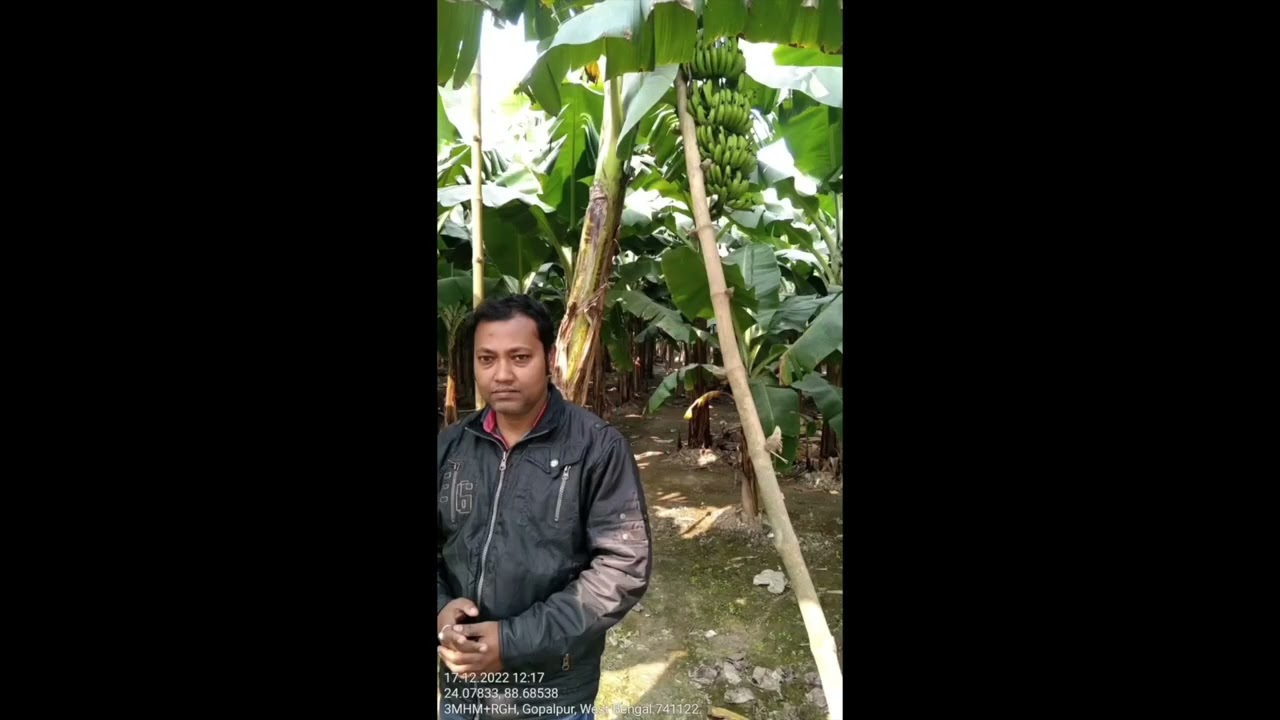Largest Sugarcane Producing State in India: Top 5 2024
“Uttar Pradesh produced over 177 million tonnes of sugarcane in 2023-24, leading India’s sugarcane output.”
Table of Contents
- Overview of Sugarcane Production in India
- Top 5 Sugarcane Producing States in India (2024)
- Uttar Pradesh: Sugarcane Production Leader
- Maharashtra: Strength of Cooperative Factories
- Karnataka: High Yields & Efficient Irrigation
- Other Notable Sugarcane States: Tamil Nadu, Gujarat, Bihar
- Comparison Table: Top 5 Sugarcane Producing States in India (Estimated 2024)
- Factors Affecting Sugarcane Yield
- Sugarcane Irrigation Methods & Water Management
- Sustainable Sugarcane Crop Management Practices
- Technology for Sugarcane Management: Farmonaut
- Future Outlook of the Sugarcane Industry in India
- Frequently Asked Questions (FAQ)
- Conclusion
Overview of Sugarcane Production in India
Sugarcane (Saccharum officinarum) is one of the most crucial crops in India’s agricultural landscape. As the primary raw material for sugar production, as well as ethanol, jaggery, and biofuel, sugarcane shapes both rural livelihoods and national industry. The sugar industry in India ranks among the largest agro-based sectors, supporting millions of farmers and workers, and delivering a variety of by-products that drive the rural economy.
India is the world’s second-largest sugarcane producer, trailing only Brazil. In the 2023–24 season, the nation’s total sugarcane production is estimated at more than 425 million tonnes. Yet, much of this output is concentrated in a handful of states—with Uttar Pradesh emerging as the largest sugarcane producer by a significant margin.

India’s sugarcane cultivation is shaped by diverse factors including climate, soil types, irrigation infrastructure, farming practices, industry management, and the presence of sugar mills and processing factories. The fertile plains of the north, enriched by the Ganges and its tributaries, enable states like Uttar Pradesh to harness exceptional yields, while western and southern states tap into cooperative models and technological advancements.
Top 5 Sugarcane Producing States in India (2024)
Let’s explore the top sugarcane producing states in India. These regions not only anchor the nation’s sugar economy but also illustrate how favorable conditions, efficient practices, and industry-specific challenges shape national output.
Below is a comparative table summarizing their position:
Top 5 Sugarcane Producing States in India (Estimated 2024)
| Rank | State Name | Estimated Production Volume (million tonnes) | % of National Production | Primary Irrigation Methods | Major Challenges |
|---|---|---|---|---|---|
| 1 | Uttar Pradesh | 177.43 | 41% | Canal, Tubewell, River | Water scarcity, disease, climate variability |
| 2 | Maharashtra | 113.37 | 25.6% | Canal, Well, Drip | Drought, input costs, monsoon dependency |
| 3 | Karnataka | 56.47 | 14.16% | Canal, Borewell, Drip | Water stress, pest outbreaks |
| 4 | Tamil Nadu | 14.53 | 4.39% | Tank, Canal, Drip | Limited rainfall, saline water |
| 5 | Gujarat | 17.44 | 4.04% | Canal, Lift, Drip | Groundwater depletion, harsh summers |
Source: RSIS International
“The top 5 sugarcane-producing states contribute nearly 80% of India’s total sugarcane yield annually.”
Uttar Pradesh: Sugarcane Production Leader
Why Uttar Pradesh Dominates Sugarcane Production in India
Uttar Pradesh stands tall as India’s largest sugarcane producer, accounting for around 41% of the nation’s total production. For the 2023–24 season, the state’s sugarcane production soared beyond 177 million tonnes, far outpacing any other state. This preeminence is not by chance but attributed to several well-aligned factors:
- Favorable Agro-Climatic Conditions: The state lies in the fertile plains of the Ganges and its tributaries, offering rich alluvial soil and adequate water tables that support lush sugarcane cultivation.
- Extensive Irrigation Infrastructure: Approximately 95.98% of the sugarcane area in Uttar Pradesh is irrigated through canals, rivers, and tubewells—ensuring consistent water supply and crop resilience.
- Established Sugar Industry: With hundreds of sugar mills and processing units, the sugar industry in India is strongly rooted in Uttar Pradesh, enabling immediate cane processing post-harvest and minimizing losses.
The state is also a hub for research and development pertaining to sugarcane varieties for high yield and sustainable crop management practices. Institutions like the Indian Institute of Sugarcane Research in Lucknow actively promote innovative agricultural solutions—increasing yield, combating disease, and promoting water-efficient irrigation methods.

Challenges for Uttar Pradesh Sugarcane Sector
- Water Scarcity: Over-extraction of groundwater in some districts threatens irrigation availability.
- Disease Management: Outbreaks of cane diseases such as red rot necessitate resistant varieties and modern management methods.
- Climate Variability: Unpredictable monsoon rains and periodic droughts challenge stable crop yields.
To ensure sustainable sugarcane farming, the state’s policy and institutional focus is on:
- Drip and rainwater harvesting
- Development of disease-resistant, high-yielding sugarcane varieties
- Promotion of organic and integrated pest management practices
Maharashtra: Strength of Cooperative Sugar Factories
Ranked second, Maharashtra contributes significantly—producing 113.37 million tonnes, or about 25.6% of India’s sugarcane output in the 2023–24 season. The state’s rise is powered by a unique blend of sugarcane cultivation practices, irrigation infrastructure, and the robust cooperative industry structure.
- Abundant Water Resources: Since 2019, Maharashtra has benefited from increased rainfall during the south-west monsoon, replenishing groundwater aquifers and reservoirs. This consistency drives improved crop establishment and production.
- Cooperative Sugar Factories: The state’s highly organized cooperative model empowers farmers across the Solapur district and other major regions. This ensures equitable profit-sharing, efficient harvesting, and rapid processing in local factories.
- Adaptive Irrigation: Major use of canal, well, and drip irrigation methods helps buffer the sector against erratic monsoon cycles.
However, Maharashtra’s growers remain vulnerable to monsoon dependency and rising input costs. Investment in modern sustainable farming practices is seen as the way forward, especially as the cooperative model inspires efficient resource use and minimizing crop losses.
Karnataka: High Yields & Efficient Irrigation
Karnataka ranks third in sugarcane production in India—producing about 56.47 million tonnes and contributing over 14% of the national output. Its yield per hectare is among the highest: averaging 96,000 kg/ha in 2021–22, thanks to:
- High Yielding Varieties: Adoption of advanced sugarcane varieties for high yield and precision crop management enhances production robustness.
- Effective Irrigation: With 99.49% of its area under irrigation—via the interlinked canals, borewells, and drip—the crop enjoys reliable water availability even during uncertain monsoon seasons.
Karnataka’s focus on technology adoption in farming practices and efficient resource management sets a positive example for other sugarcane states. The state, however, must address water stress and periodic pest outbreaks.
Other Notable Sugarcane States: Tamil Nadu, Gujarat, Bihar
Tamil Nadu
Tamil Nadu’s sugar industry is centered around innovative sugarcane management—with yields of approximately 14.53 million tonnes, or 4.39% of the national production. The state’s distinctive features are:
- Widespread application of tank and canal irrigation
- Focus on disease management and saline water mitigation
Gujarat
Gujarat contributes about 17.44 million tonnes (or 4.04% of India’s sugarcane output). Sugarcane here is mostly grown under lift irrigation systems and increasingly widespread drip irrigation—helpful in coping with persistent groundwater depletion and harsh summer climate.
Bihar
Bihar produces about 13.97 million tonnes (or 3.71% of the national total), benefitting from fertile Gangetic soil and tube-well irrigation methods. The state’s major challenges are periodic floods and unreliable monsoon rainfall.
Factors Affecting Sugarcane Yield in India
Understanding the factors affecting sugarcane yield is critical for everyone along the sugar value chain, from farmers to processors and policymakers. Key factors include:
- Climate Conditions: Optimal sugarcane production demands a warm, humid environment, well-timed rainfall, and moderate temperature fluctuations.
- Irrigation & Water Availability: The sugarcane crop is highly water-intensive: inconsistent or deficient water supply will negatively impact both yields and production quality.
- Soil Fertility: Regions with deep, well-drained, fertile soil—like the Gangetic plains—are ideal for cane root development.
- Disease and Pest Management: Red rot, smut, and other diseases can devastate crops without proper resistant varieties and vigilant management.
- Farming Practices: Use of high-yielding varieties, precision fertilizer and water application, timely planting and harvesting all influence output.
Sugarcane Irrigation Methods & Water Management
Sugarcane irrigation methods directly affect crop health, yields, and resource efficiency. Irrigation infrastructure is particularly crucial in sugarcane producing states that experience erratic monsoon rainfall or groundwater depletion.
Types of Irrigation for Sugarcane
- Canal Irrigation: Extensive canal networks fed by rivers (mainly in north India) supply water efficiently to sugarcane fields.
- Tubewell & Borewell Irrigation: Common in Uttar Pradesh and Bihar, this method taps underground aquifers.
- Drip Irrigation: Increasingly adopted in Maharashtra, Karnataka, Gujarat, and Tamil Nadu for water conservation—efficiently delivering water to the root zone and preventing evaporation losses.
- Tank & Lift Irrigation: Utilized in southern states with limited surface water availability.
Modernizing irrigation methods has become a necessity due to rising water scarcity. Precision irrigation practices (like drip and controlled canal operations) and technologies for monitoring soil moisture (such as those provided by us at Farmonaut) can greatly optimize input efficiency and yield.
Sustainable Sugarcane Crop Management Practices
With rising demand, rapidly changing climate patterns, and persistent resource pressures, sustainable sugarcane farming is a key policy and industry priority for the future of sugarcane production in India.
- Water-Efficient Farming: Adopting drip irrigation, mulching, and rainwater harvesting to reduce dependence on declining groundwater reserves.
- Integrated Pest and Disease Management: Combining resistant sugarcane varieties, crop rotation, and biological controls to minimize reliance on chemical pesticides and mitigate outbreaks.
- Soil Fertility & Nutrition: Regular monitoring and balanced use of organic and inorganic fertilizers keep soils productive, reduce runoff, and promote sustainable yields.
- Improved Harvesting & Processing: Mechanization and improved mills increase efficiency and reduce post-harvest losses.
Institutions and solution providers continuously research new sugarcane crop management practices, aiming for better yields with fewer resources.
Technology for Sugarcane Management: Farmonaut
As sugarcane production in India becomes increasingly data-driven, cutting-edge technology is revolutionizing crop health monitoring, resource allocation, and overall sugarcane crop management.
At Farmonaut, we deliver advanced satellite-based farm management solutions accessible through Android, iOS, our browser App, and API (Developer Docs). Our mission is to make precision agriculture both affordable and accessible for all, empowering farmers, agribusinesses, and government agencies.
- Satellite-Based Crop Health Monitoring: We empower sugarcane farmers to monitor field-level vegetation health (using indicators like NDVI), soil moisture, stress, and other critical variables—optimizing irrigation and fertilizer use to maximize yield and minimize input wastage.
- Jeevn AI Advisory System: Our AI-driven system issues real-time, customized industry-specific crop insights—including expert suggestions for sugarcane management, weather alerts, and resource optimization strategies.
- Blockchain for Product Traceability: We enable secure, end-to-end traceability of sugar and by-products via blockchain-based traceability solutions, strengthening quality assurance and transparency in the industry.
- Fleet and Farm Resource Management: For large-scale sugarcane operations, we offer fleet management tools that optimize logistics—improving yield from harvested cane and reducing operational costs.
- Carbon Footprinting: We help sugarcane processors and mills track and reduce their environmental impact, promoting carbon footprint tracking for sustainable compliance and international market access.
Farmonaut works on a flexible subscription-based model, enabling everyone from individual farmers to agribusinesses and policymakers to access tailored, data-driven agricultural management tools.
For those seeking satellite-based verification for crop loans and insurance in the sugarcane sector, we also provide specialized crop loan & insurance solutions—minimizing fraud risks and ensuring smooth access to climate-smart financing.
Explore large-scale plantation & forest management with our dedicated farm admin app—the perfect tool for estate or contract managers overseeing vast sugarcane areas and crop rotation.
Future Outlook of the Sugarcane Industry in India
Despite the positive trajectory, the future of sugarcane production in India requires integrated efforts:
- Investment in R&D: Focused on disease-resistant, climate-adapted varieties, and further mechanization of farming and harvesting.
- Modernization of Irrigation Infrastructure: Emphasis on precision farming to minimize water consumption and improve resource allocation.
- Policy Support: Encouraging sustainable practices and supporting innovative technology platforms that democratize access to precision agriculture.
- Climate Adaptation: Readiness for fluctuating monsoon patterns, droughts, and shifting pest and disease profiles.
Frequently Asked Questions (FAQ): Sugarcane Production and the Largest Sugarcane Producing States in India
1. Which state is the largest producer of sugarcane in India?
Uttar Pradesh is the largest sugarcane producer in India, accounting for over 41% of the country’s total production in the 2023–24 season.
2. What are the top 5 sugarcane producing states in India?
The top 5 are: Uttar Pradesh, Maharashtra, Karnataka, Tamil Nadu, and Gujarat (by order of annual production volume).
3. What factors affect sugarcane yields?
Key factors include climate (rainfall, temperature), water and irrigation availability, soil fertility, presence of disease/pests, proper farm management, and adoption of high-yielding varieties.
4. Which irrigation methods are most effective for sugarcane farming?
Canal, tubewell, and increasingly drip irrigation methods are widely used. Drip is especially efficient for water-stressed states like Maharashtra and Gujarat.
5. What role does technology play in modern sugarcane cultivation?
Technologies like remote sensing, satellite imagery, AI advisory, and blockchain-based traceability (as offered by platforms like Farmonaut) help optimize yields, reduce input costs, and improve sustainability and transparency in the sugar supply chain.
6. How can sugarcane farming become more sustainable?
Through water-saving irrigation (e.g., drip), integrated pest/disease management, soil health monitoring, crop rotations, and digital resource management.
7. How can I get started with satellite-based farm management for sugarcane?
You can explore Farmonaut’s dedicated web, Android, and iOS apps or integrate data via our API for advanced, real-time decision support and traceability.
Conclusion: India’s Sugarcane Landscape Moving Forward
India’s sugarcane production story is driven by a mix of favorable geography, advanced industry infrastructure, technological innovation, and adaptive management practices. Uttar Pradesh sets the benchmark with its unmatched output, sustained by fertile plains, extensive irrigation, and vibrant industry support. Hot on its heels, Maharashtra and Karnataka signal the power of cooperative factories, high-yielding varieties, and water-wise irrigation.
Maintaining this upward trajectory will require consistent research, vast R&D, policy initiatives for climate adaptation, and the widespread adoption of sustainable practices and digital tools. With innovations in crop monitoring, carbon footprinting, transparent traceability, and scalable resource management through advanced platforms, India is poised to reinforce its leadership, ensuring that sugarcane remains a sustainable cornerstone for rural prosperity and economic growth.
Whether you’re a farmer, estate manager, policymaker, or part of the agri-industrial supply chain, exploring smart solutions for sugarcane crop management is the surest way to secure yields, promote efficiency, and steer towards a greener, more resilient agri-economy.




















